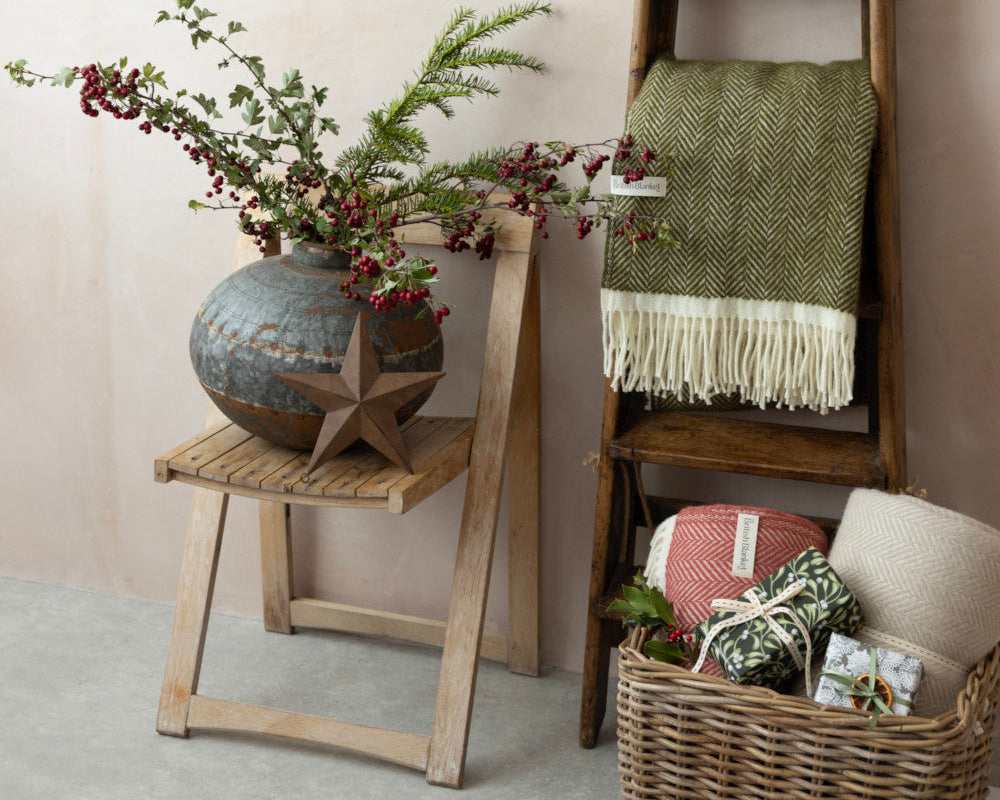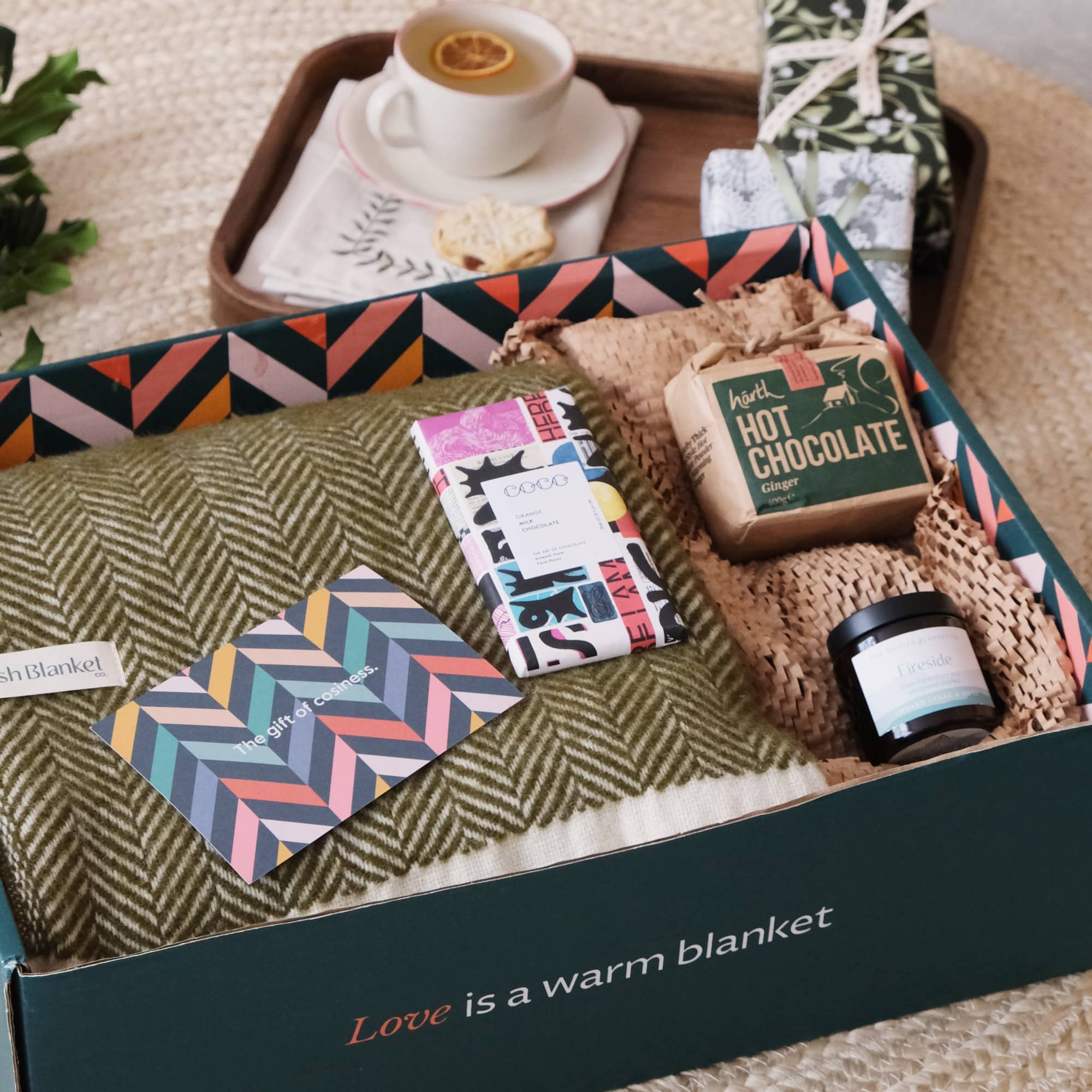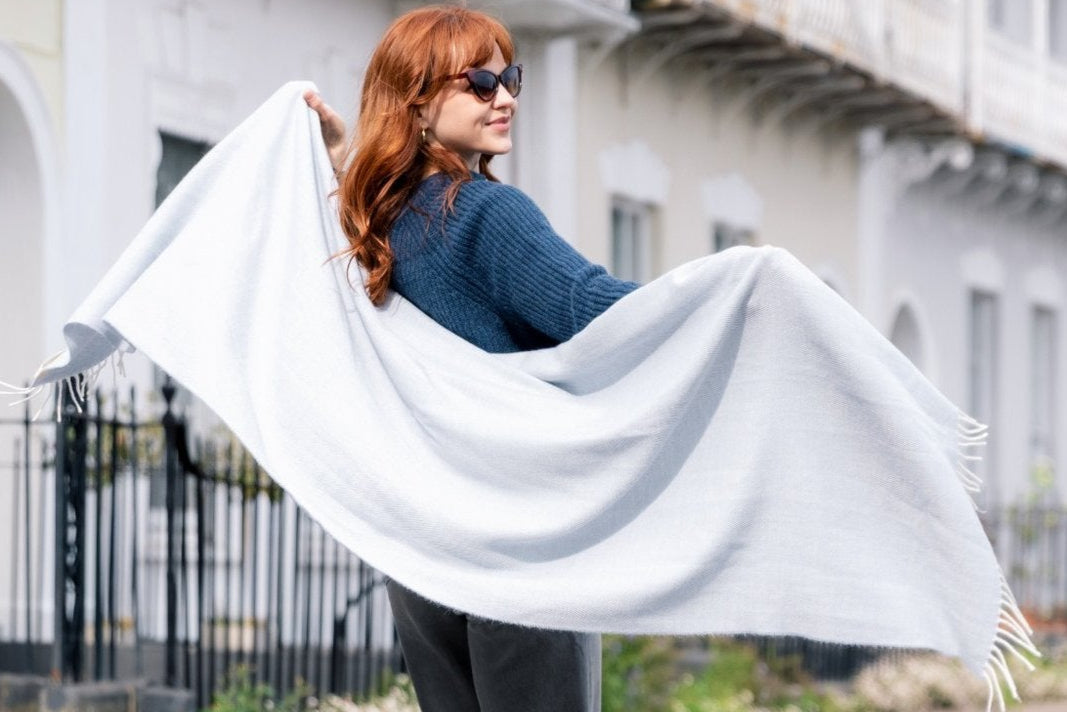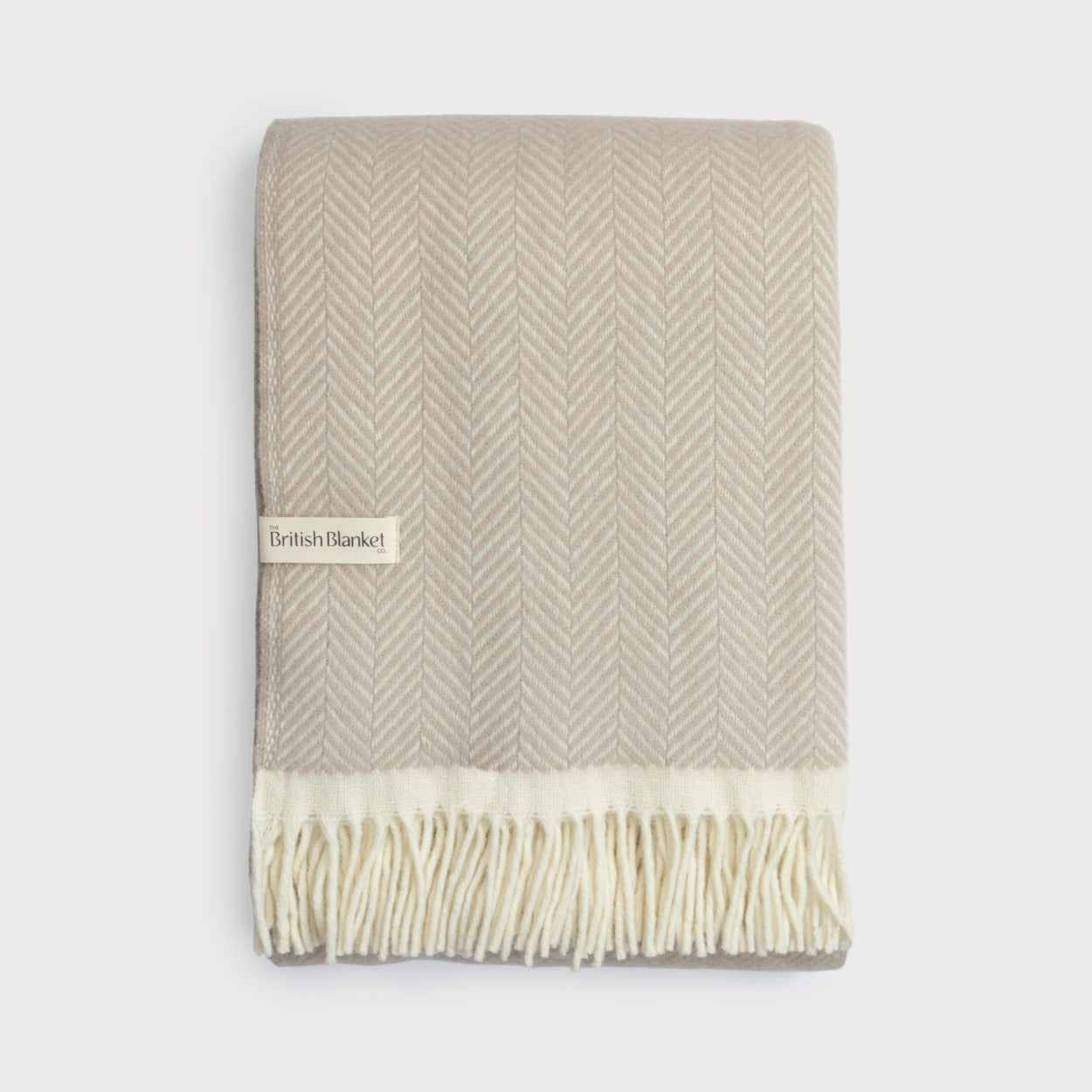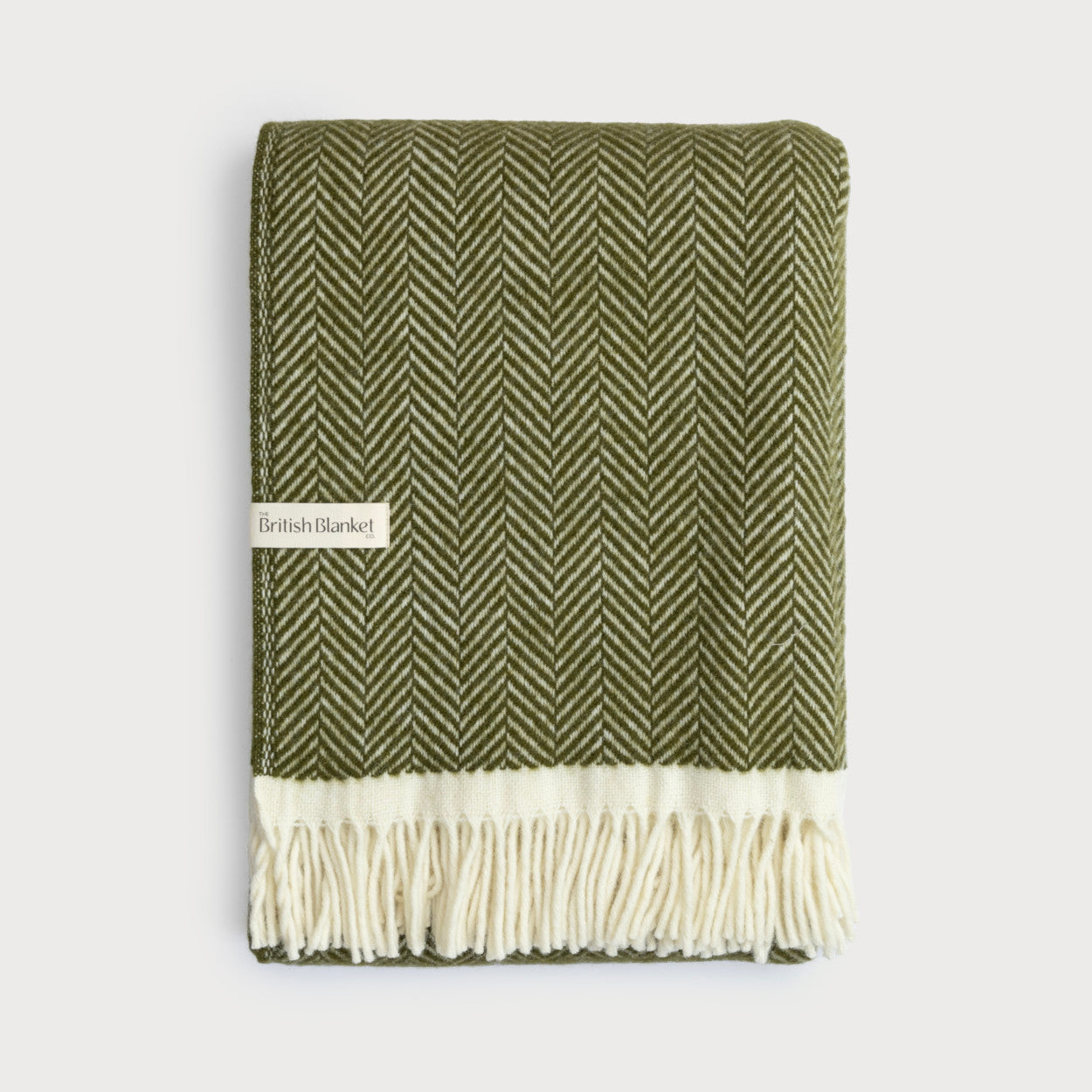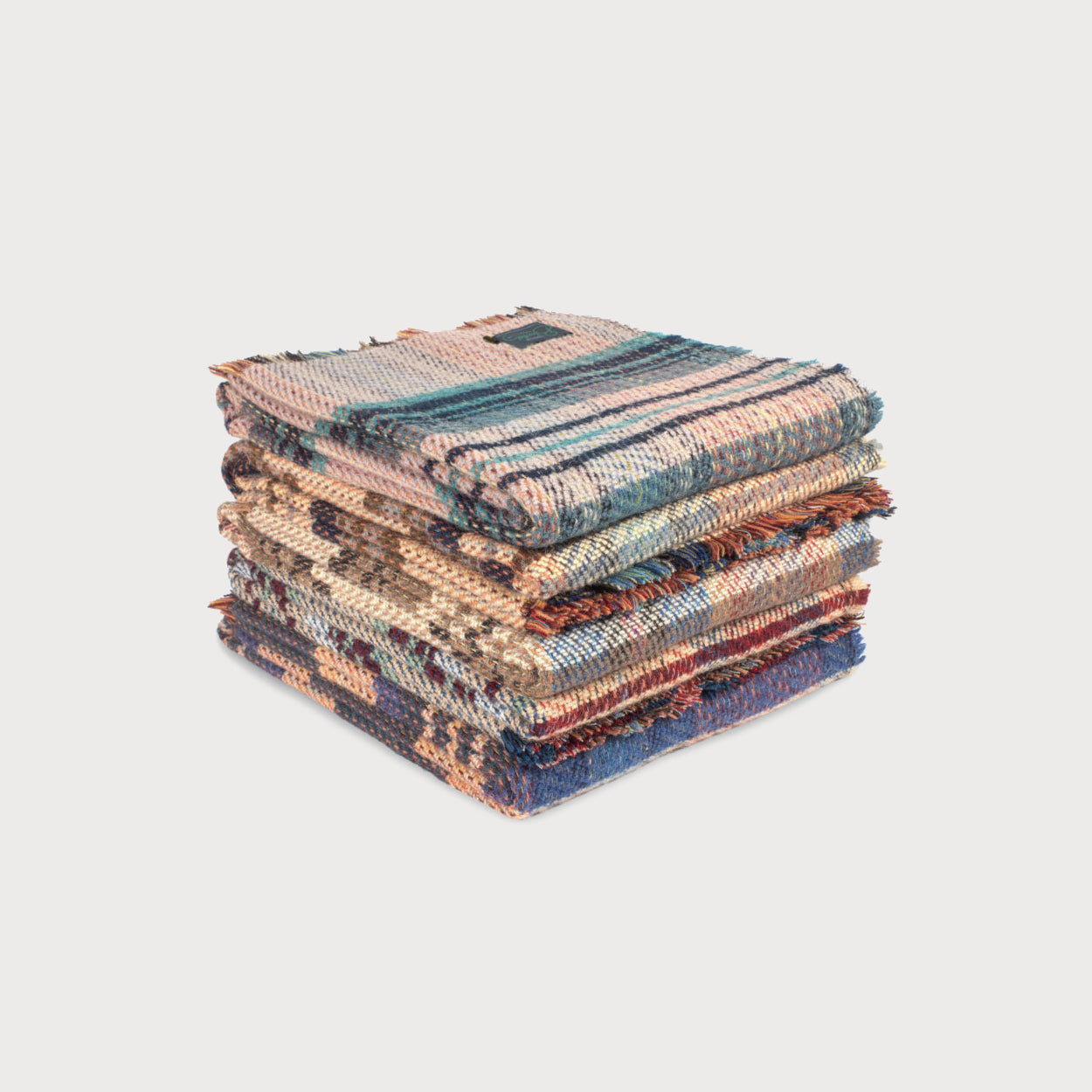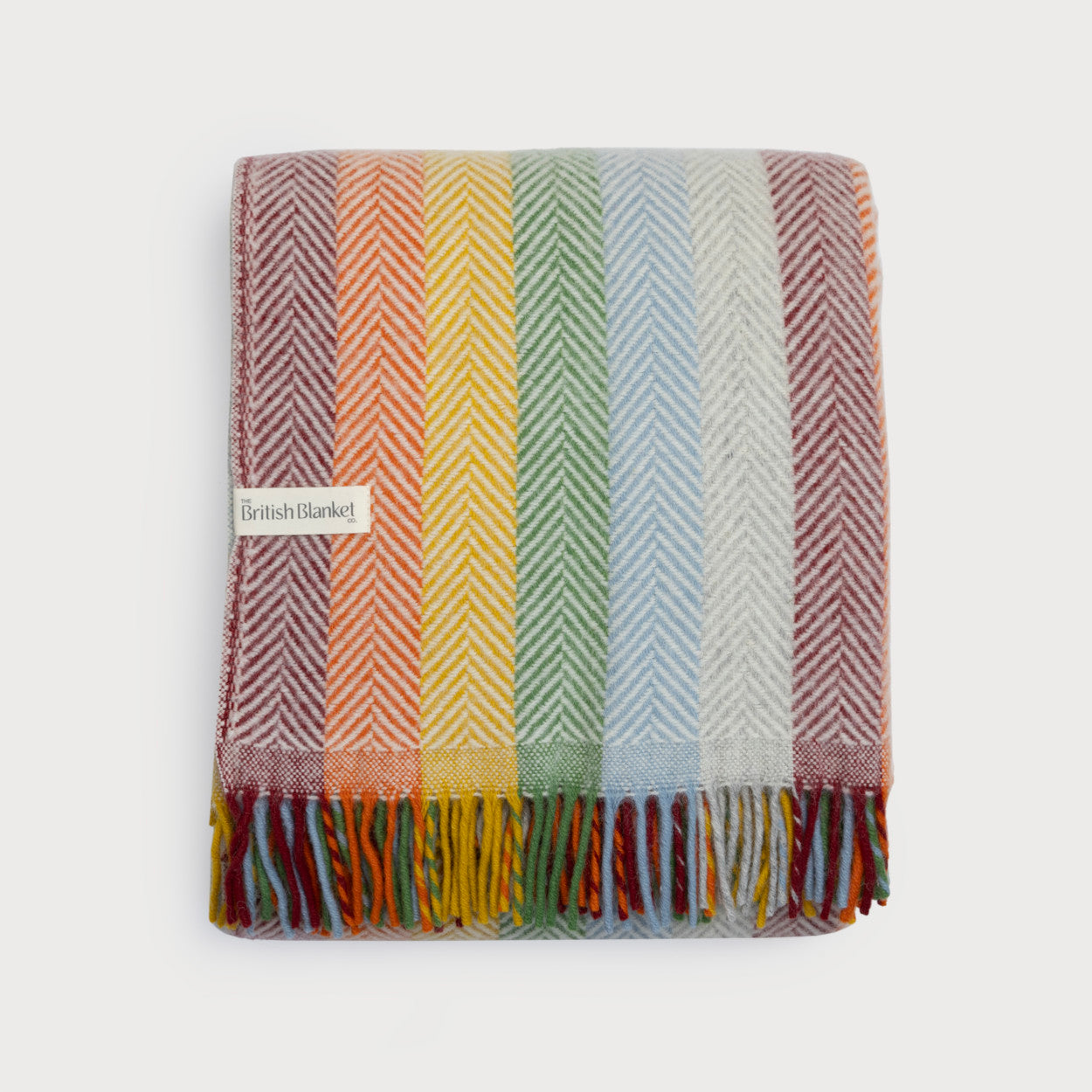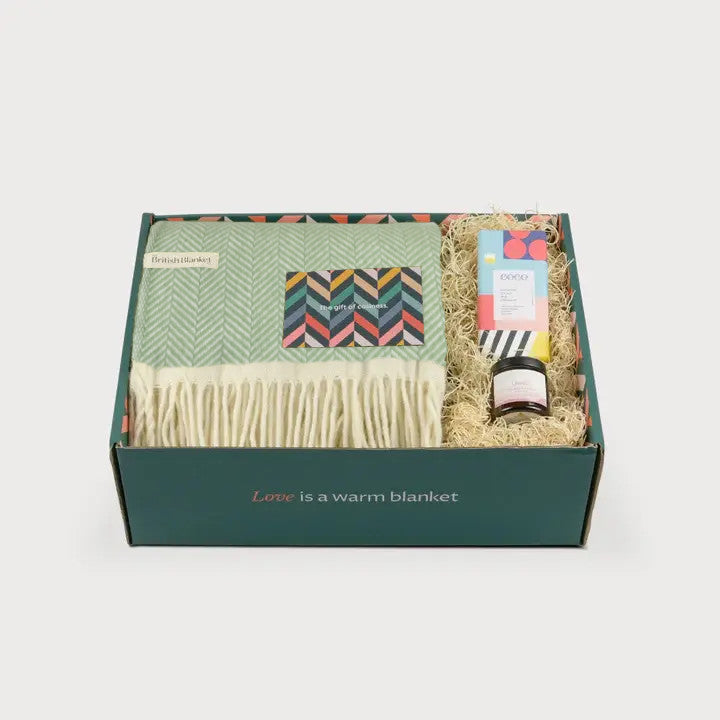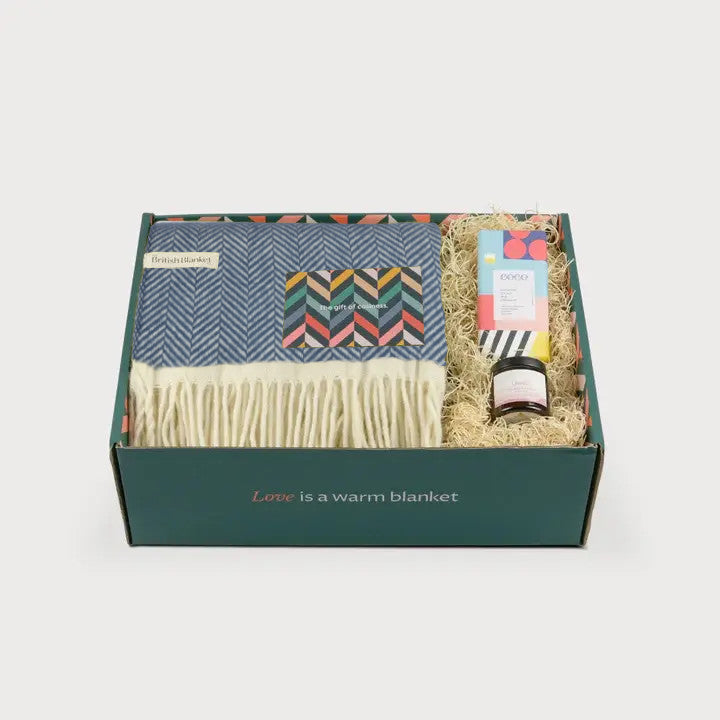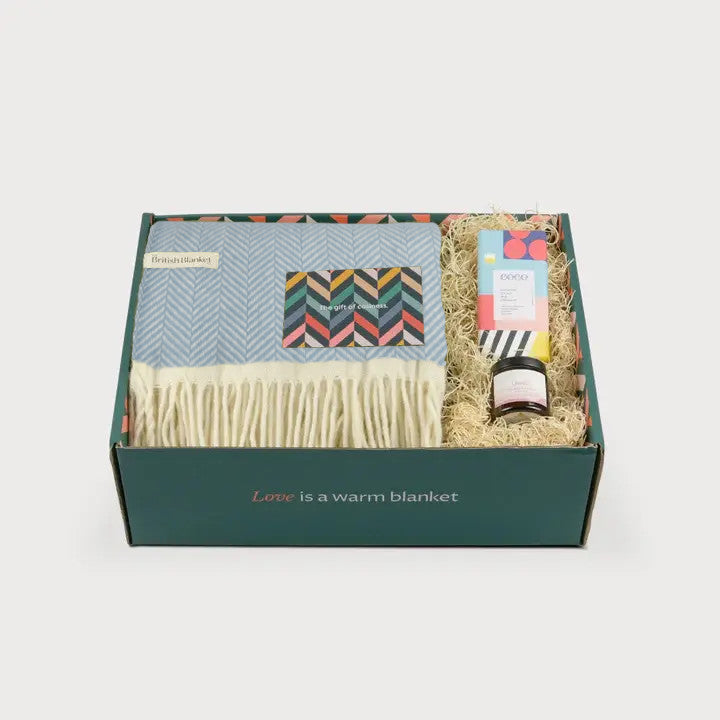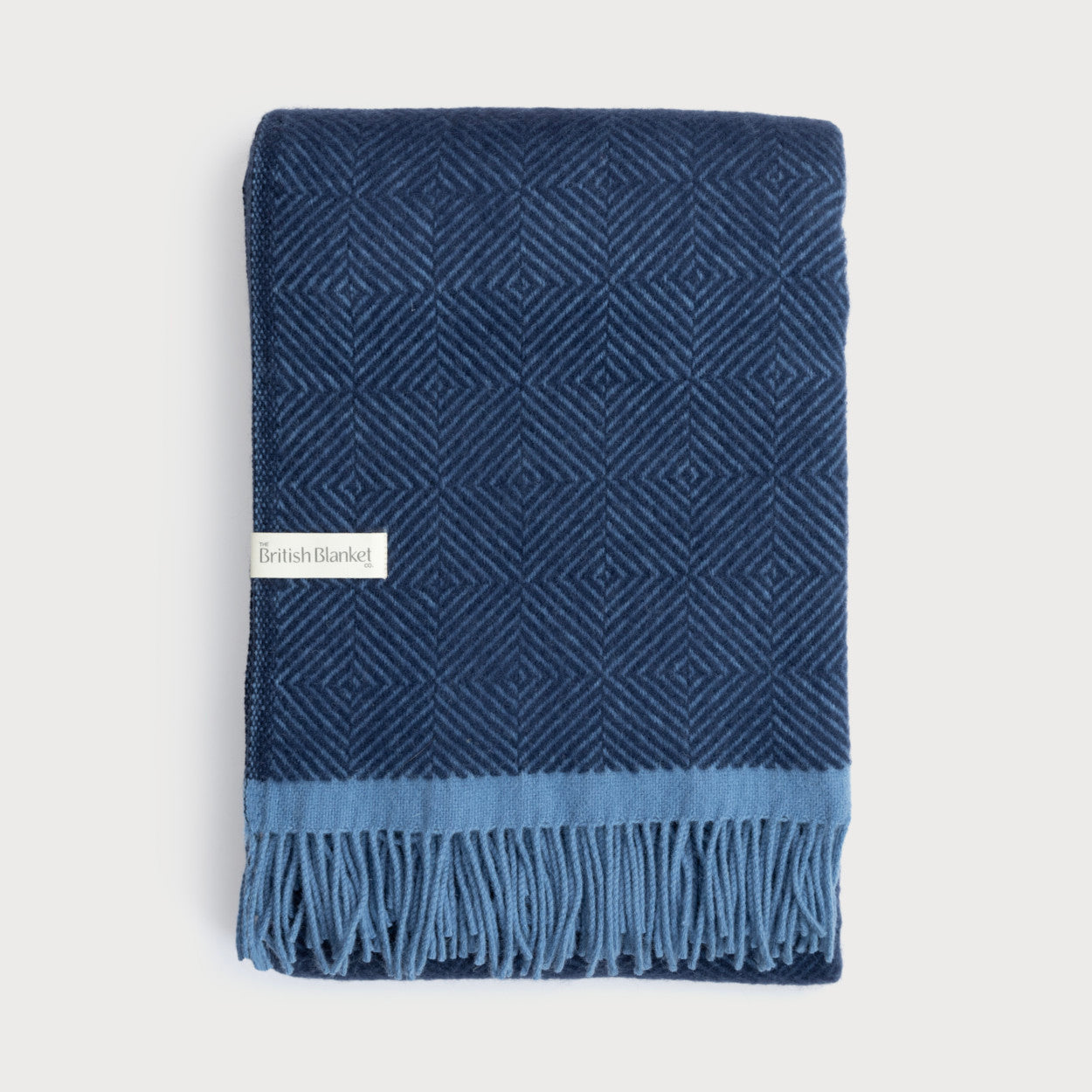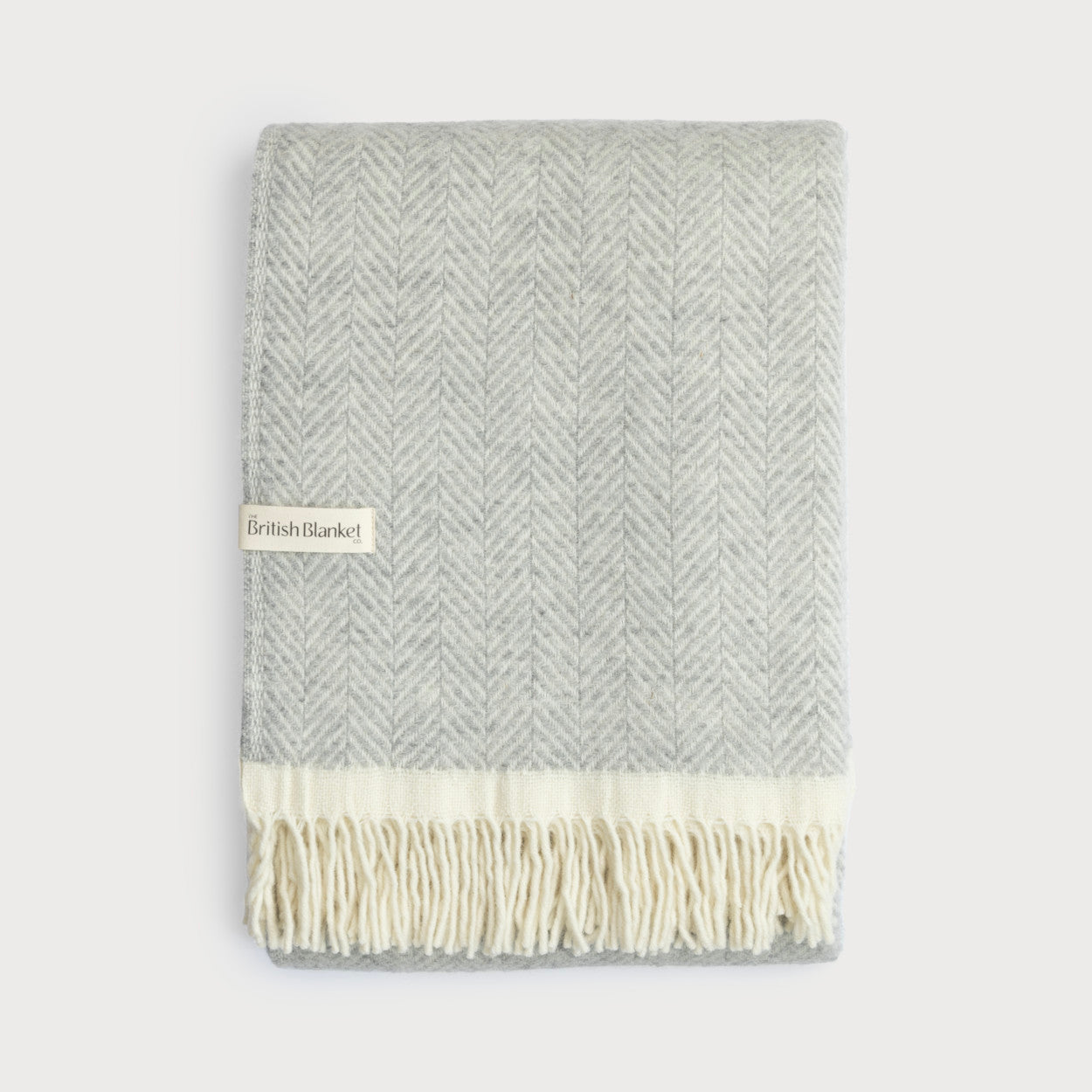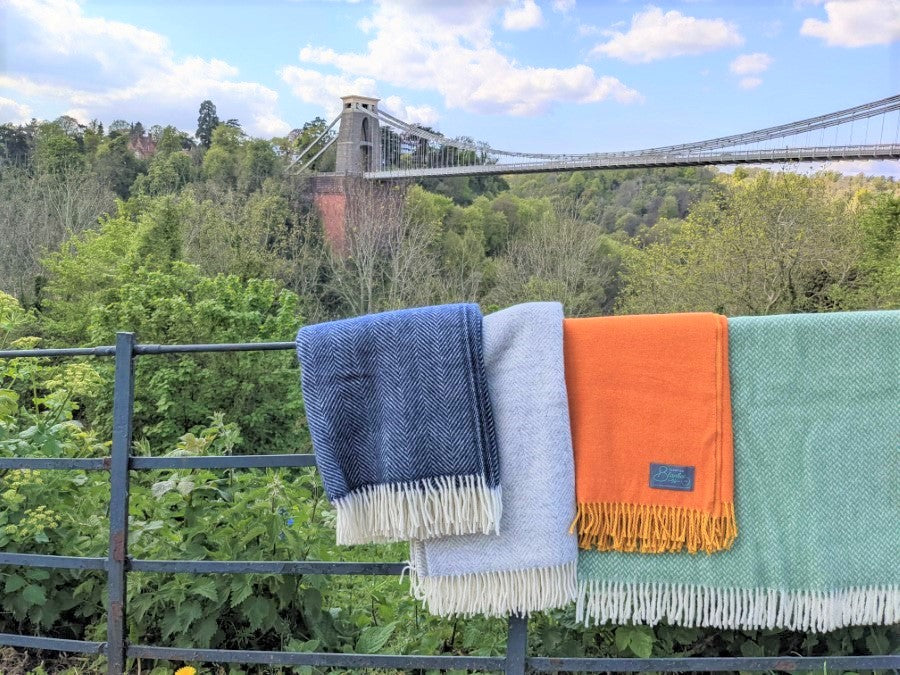According to a local legend, blankets were invented in the 14th century in Bristol, England. Running The British Blanket Company here in Bristol, we couldn't be more delighted by the thought! But, is there really any truth in this intriguing nugget of Bristol history? We delve into Bristol’s textile history to find out…
The British Blanket Company is proudly based in Bristol, home of the famous Clifton Suspension Bridge. But, could Bristol also be the birthplace of blankets?
Above: Navy Herringbone Blanket, Silver Grey Herringbone Blanket, Orange and Mustard Supersoft Merino Wool Blanket & Sage Green Signature Herringbone Blanket
Bristol’s textile history
Our home city of Bristol isn’t short of famous inventions. From SS Great Britain to Concord, Bristol has long been at the forefront of developing new products and technologies.
To explore Bristol’s connection to the history of blankets, we need to roll the clock right back to the 14th century. Medieval Bristol (then called Brightstowe, Brigstow, or Bristow) was already a bustling port, centred around Redcliffe and Bristol Bridge.
Tucked down a side street, we meet the first hero of our tale...
Edmund Blanquette was a Flemish weaver who probably came to Bristol fleeing persecution. The legend goes that Edmund lay awake in bed one night, shivering under a smelly heap of goat skins. Tiptoeing to his workshop, his feet numb with cold, he took a piece of woven woollen cloth from his loom and threw it on the bed. Sleeping snuggly for the rest of the night, Edmund woke up with an idea.

The tomb of Edmund Blanket and his second wife, Margaret, in St Stephen's Church in Bristol.
Image: Angie Parker
Who invented blankets?
Of course, like every good legend, the story must be taken with a pinch of salt. However, records from the late 1330s do show a relative of Edmund Blanquette, Thomas Blanket, operating a successful weaving workshop in Tucker Street, just south of the Bristol Bridge. While most weavers at the time were self-employed, one-man operations, Thomas Blanket’s workshop was more ambitious affair. Thomas effectively operated a small factory, with several employees working the looms under one roof.
Why is a blanket called a blanket?
Weaving was medieval Bristol’s main industry, underpinning most of the town’s seaborne trade. It was tightly regulated by the guilds to maintain the quality of the finished cloth and protect the interests of the weavers. King Edward III (reigned 1327-1377) started to change all that. He saw that if the vast English cloth trade was more profitable, he could raise higher taxes to pay for his wars. He restricted the importation of foreign cloth and tightly controlled raw wool exports, making it easier to collect duty.
The impressive quantities of cloth coming out of Thomas Blanket’s Bristol workshop attracted the King’s attention and, in 1340 he was made a local official. Blanket’s industrial production methods may well have made woollen bed coverings more affordable and fashionable. Thus, Thomas Blanket’s name became synonymous with the woollen cloth he produced, and the “blanket” was born!

A beautiful map of medieval Bristol, painted by John Speed in 1611
Links to the history of Witney blankets
There’s another intriguing scrap of circumstantial evidence from Witney in Oxfordshire. Witney was famous in the 19th and 20th centuries as the centre of Britain’s blanket industry. Until the duvet came along, almost everyone in Britain slept under heavy woollen Witney blankets. Two separate 19th-century histories of Witney* both credit the invention of the blanket to “Thomas Blanket” or “Thomas à Blanket” of Bristol. Surely the people of Witney wouldn’t credit a Bristolian with the invention of their most famous product, unless there was belief in the legend?
Was the blanket invented in Bristol?
Although it can’t be proven, the historical evidence certainly lends support to the legend. Personally, we at The British Blanket Company love the idea that the blanket was invented in our home city, so we’re sticking to the story!
The British Blanket Company helps to preserve Britain's weaving heritage by making all our wool blankets and throws at traditional mills in the UK and Ireland
How does The British Blanket Company preserve Britain’s weaving heritage?
Reviving Britain’s weaving heritage is an important part of our mission at The British Blanket Company. We only work with weaving mills in the UK and Ireland that craft our wool blankets in the traditional way. When you buy a blanket or scarf that’s made in Britain, you too play a part in preserving this historic industry and keep weaving skills alive. You can shop our complete blanket collection online now with free UK delivery.
*Giles, J.A.; History of Witney (J.R. Smith, London, 1852) and Monk, W.J.; History of Witney (J. Knight, Witney, 1894).
This blog draws heavily on the research of local Bristol historian and journalist Eugene Byrne, who wrote this piece. We would like to thank Eugene for kindly permitting us to use his research in this article.
